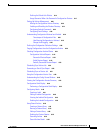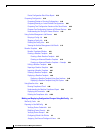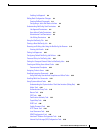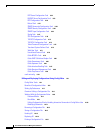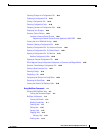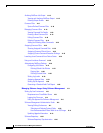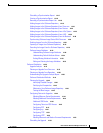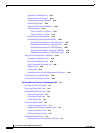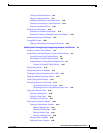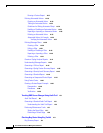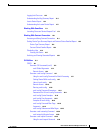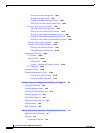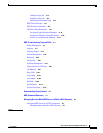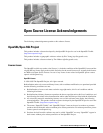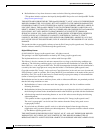
Contents
xvii
User Guide for Resource Manager Essentials 4.1
OL-11714-01
Creating an Automated Action 13-9
Editing an Automated Action 13-11
Enabling and Disabling an Automated Action 13-12
Exporting and Importing an Automated Action 13-12
Deleting an Automated Action 13-13
Using Change Audit Reports 13-13
Generating an Exception Period Report 13-14
Generating 24 Hours and Standard Change Audit Reports 13-16
Understanding Change Audit Report 13-19
ChangeAudit Process 13-20
Stopping and Restarting the Change Audit Process 13-21
Enabling and Tracking Syslogs Using Syslog Analyzer and Collector 14-1
Overview: Common Syslog Collector 14-4
Viewing Status and Subscribing to a Common Syslog Collector 14-5
Viewing Common Syslog Collector Status 14-5
Subscribing to a Common Syslog Collector 14-6
Understanding the Syslog Collector Properties File 14-7
Timezone List Used By Syslog Collector 14-10
Using Syslog Analyzer 14-10
Using Syslog Service on Windows 14-11
Checking the Syslog Configuration File on UNIX 14-12
Stopping and Restarting Syslog Analyzer 14-12
Viewing Syslog Analyzer Status 14-13
Configuring Devices to Send Syslogs 14-13
Configuring the Device Using Telnet 14-14
Configuring the Device Using NetConfig Syslog Task 14-16
Syslog Administrative Tasks 14-18
Setting the Backup Policy 14-19
Setting the Purge Policy 14-20
Performing a Forced Purge 14-21
Defining Custom Report Templates 14-22
Creating a Custom Report Template 14-23
Adding a Message Type 14-24
Deleting a Message Type 14-25
Editing a Message Type 14-25
Selecting a Message Type 14-26
Editing a Custom Template 14-26
Deleting a Custom Template 14-26



